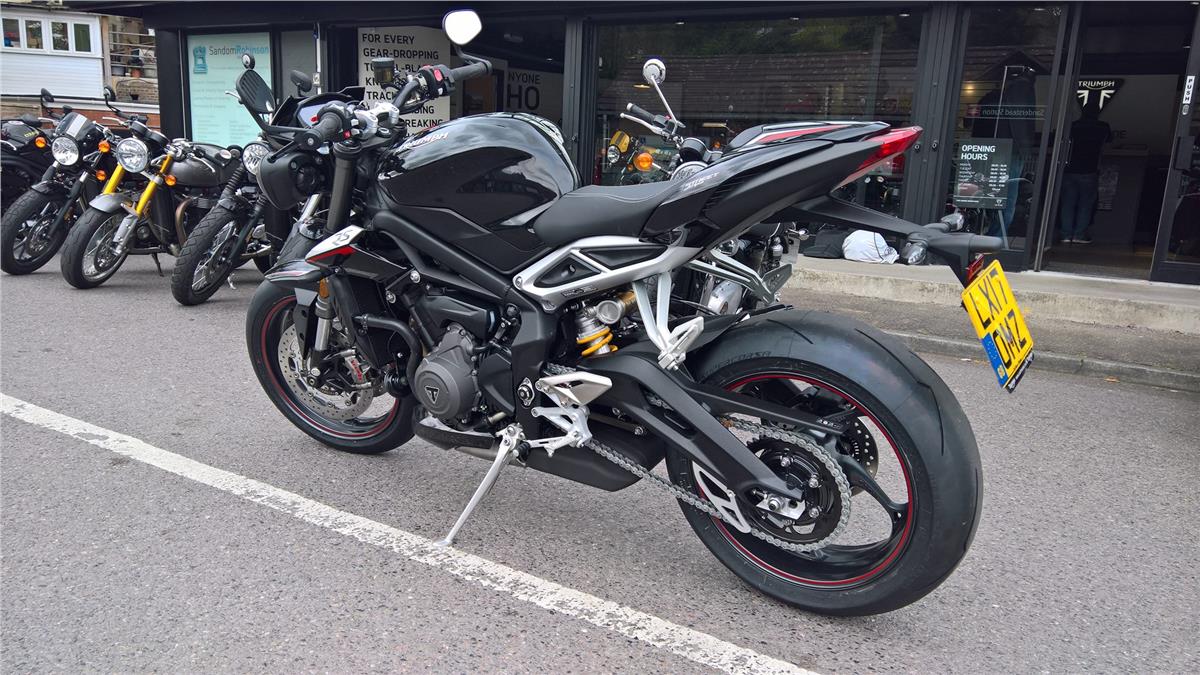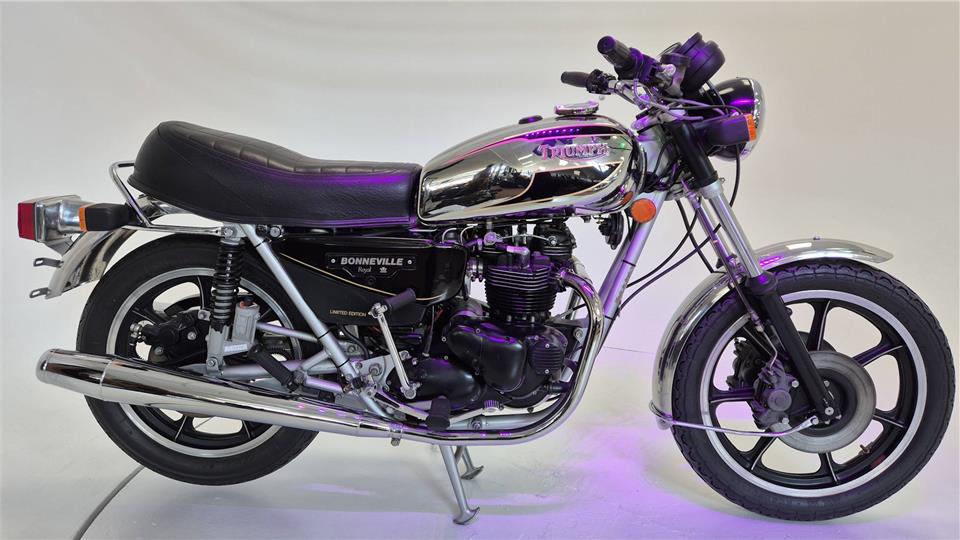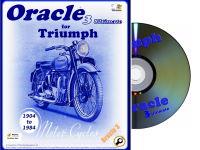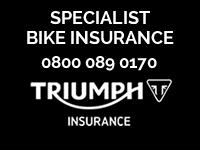
The new version of the iconic Street Triple is now being delivered to customers with the first ones having taken delivery in the last few days. That's certainly enough time to have put a good few miles on them and get a good impression of what they're like from an owners' perspective.
The first question people ask is "what's it like compared to the old 675cc Street Triple R?" A simple enough question, but the answer can be as long as the spec sheet! The number of changes and improvements - and these are very much noticeable ones - is very numerous.
The heart of a motorcycle is the engine, so we should really start there. The increase in capacity from 675 to 765cc makes a massive difference. Not just in the amount of useable torque and power you get from it, but also in the noise it makes. We hear a lot about Euro4 stifling engines, but the new Street Triple RS proves that this is just not the case. It sounds a lot louder than the 95dbA it's registered at (with the stock exhaust) and that's all down to the extra ccs generating a more growly engine sound. You're going to want to turn that throttle a lot as the noise you get is very rewarding. The throttle response is immediate from the fly-by-wire system and you really do notice the extra torque and power. We've described it as 'useable' torque and power because the fly-by-wire system makes sure you can poodle about in town at under 4,000 rpm without any snatchiness, but also open it up to make rapid progress when out of the urban speed restrictions. Even with the bike in 'sport' mode (which gives a quicker throttle response) you get nothing but a smooth delivery of power with no surprises.
Another aspect that has been improved on is the handling. The old Street Triple R was one of the best handling bikes you could get, the new Street Triple RS loses none of that and indeed improves on it. Again, whether you're weaving in and out of traffic in the towns or negotiating roundabouts and corners in the country, the handling does not let you down in any way. To coin a hackneyed phrase, it takes corners like it's on rails. It's just so easy and so forgiving and so confidence inspiring that you feel you don't need to brake for any corner, just lean it in and it will get you around.
The front brakes are also an improvement. Though still Brembos, the M50 calipers give better stopping power. The brake lever is also fully adjustable for span and ratio - so you can now adjust how much feel you get. If you're not used to Brembos then start on the lowest ratio setting as they will certainly stop you on a 5p piece (we've been decimalised for 45 years so we can stop using sixpences now... and yes I know a sixpence was 2.5 new pence) even then.
The dashboard is a massive improvement. The TFT display is much more visible and much easier to read, either in day or night modes. You have a choice of themes and styles so you're sure to find one you like (Theme 1 Style 2 for me). The menu is much easier to navigate with the dedicated 'home' button on the right and the joystick on the left, and it took hardly any time to set up the screen how I wanted. The screen has what is called a 'tray' at the bottom which you can set up to show various information views like fuel usage, trip counter, or coolant temperature - and you switch between the various information views with the joystick. It's not quite as easy to use whilst riding but the joystick switch is low enough not to be confused with the indicator switch when coming up to a turn.
There is just so much to praise about the Street Triple RS, it would just take far too long. It goes (brilliantly), it stops (quickly), and it sounds wonderful. However it isn't perfect. There are a few... niggles let's say.
The biggest niggle is the indicator switch. The indicators are self-cancelling (you can turn that feature off if you want) so gone is the positive-action push switch with cancel and instead you now have a switch that needs hardly any pressure to switch the indicators on. You don't get any feedback from the switch that you've actually pushed it so I kept having to check the dashboard to make sure the indicators were on. It's also very easy to brush the switch with your thumb and not even realise that the indicators have been triggered.
Another niggle is with the fuel level indicator. It seems rather jumpy and sticks at a particular level for a while before jumping down giving you a false sense of security fuel wise (though that might just be the machine I have). Once you do start to run out of fuel the low-fuel warning light does come on at the right level... and also shows up in the information tray on the dash and you then have to 'acknowledge' that by pressing in the joystick before you can see any other information in the tray.
The high/low beam switch has also changed. In place of the usual high/low beam switch is now a DRL/low beam switch. Daytime Running Lights (DRL) are LEDs in the headlight units which you can have on instead of the low-beam and the actual high/low beam switch has moved to where the usual 'pass' (or flash) switch was. Here is another niggle, in DRL mode the high/low beam switch acts as a 'pass' switch with the high-beam only coming on whilst you have the switch held in but in headlight mode the high/low beam switch acts as a 'toggle' between high and low beam with each press toggling between high and low beams. It can be a bit confusing if you forget which mode your headlights are in.
The suspension on the RS is absolutely top-notch, as well it should be. A lot of the confidence you get from the machine is down to the excellent stability you get from the suspension units, and on smooth roads you get nothing but excellent feedback allowing you to take corners at higher speeds than you would have done on the old 675 R model. However you also notice every bump and pothole in a sort of spine-jarringly way. The stock settings are probably a little on the firm side for normal road-riding so I'd recommend you have a think about softening up the suspension by reducing the compression and rebound a little just to take the edge off the bumps - how much (if any) will depend on you, your weight, and how you ride, there isn't one setting for all but read up on proper guides to suspension settings before you do.
The rear brake is more an ornament than a functioning bit of equipment - well at least to begin with. It will hold you at the lights no problem, but you can stand on the pedal and it won't lock up the rear or appear to slow you down much. Not that much of a problem as most riders don't tend to use the back-brake but if you do want it to steady the rear when fast-cornering then I'm not sure how much it will do for you. That said, it does take a long time to bed in and its performance improves a little once it has bedded in so if you do want to use it I'd recommend actively bedding it in for the first 200 miles.
These are just niggles though, and certainly don't detract from the absolute brilliance of the machine overall.
So, to get back to the original question, "what's it like compared to the old 675cc Street Triple R?" The simple answer is "streets better." It's a whole new machine and has taken the bar set by the old Street Triple R and pushed it out of the court. If you're in the market for an all-round middleweight, or a weekend hooning tool, or even a commuter machine that you can have fun on at weekends then the Street Triple RS has to be on the top of your list.












